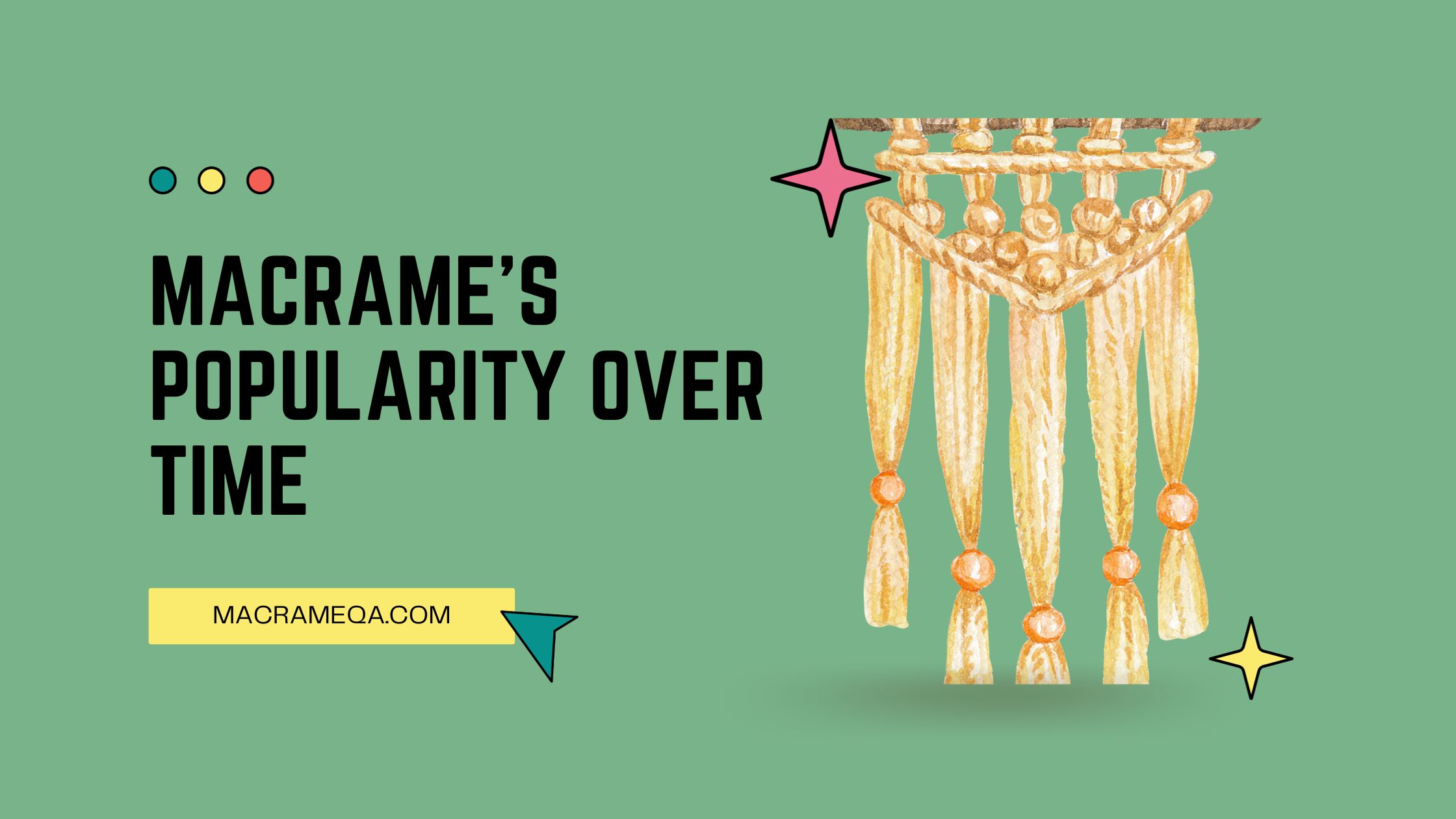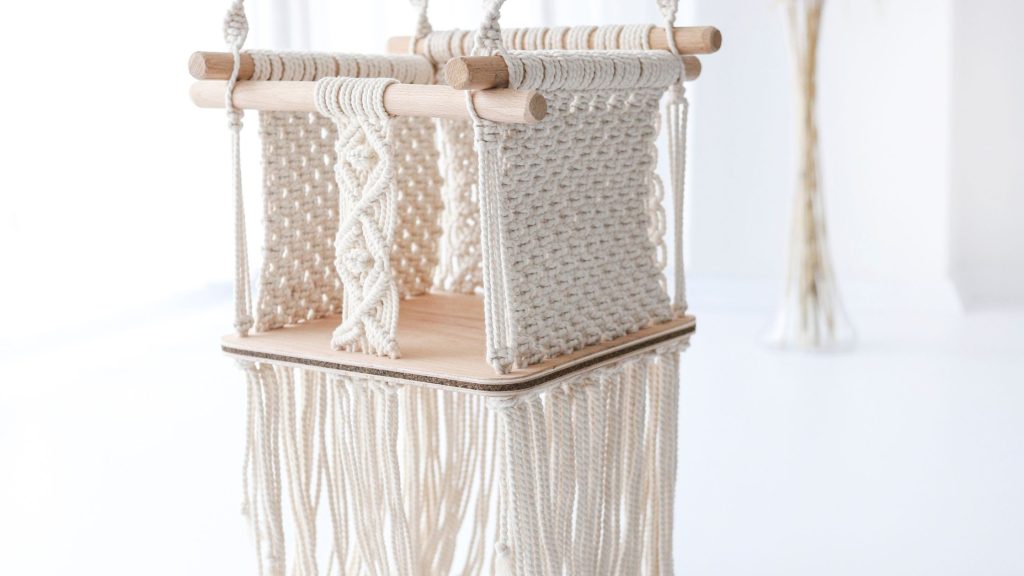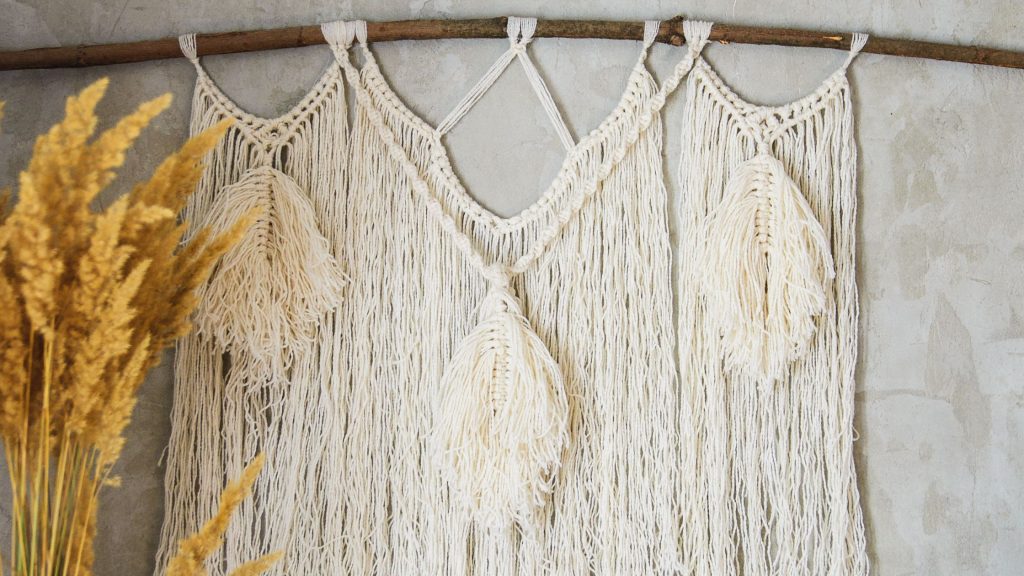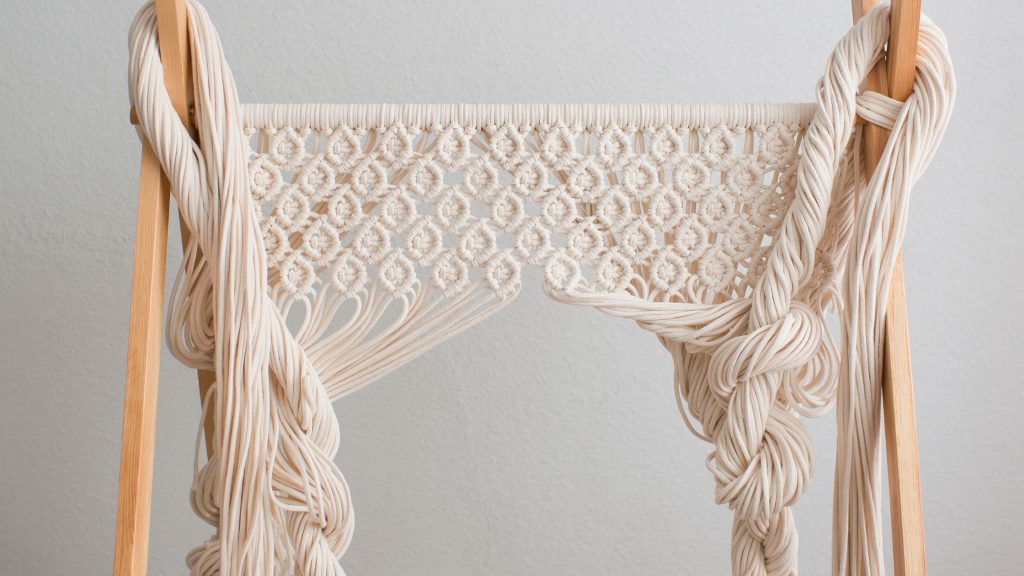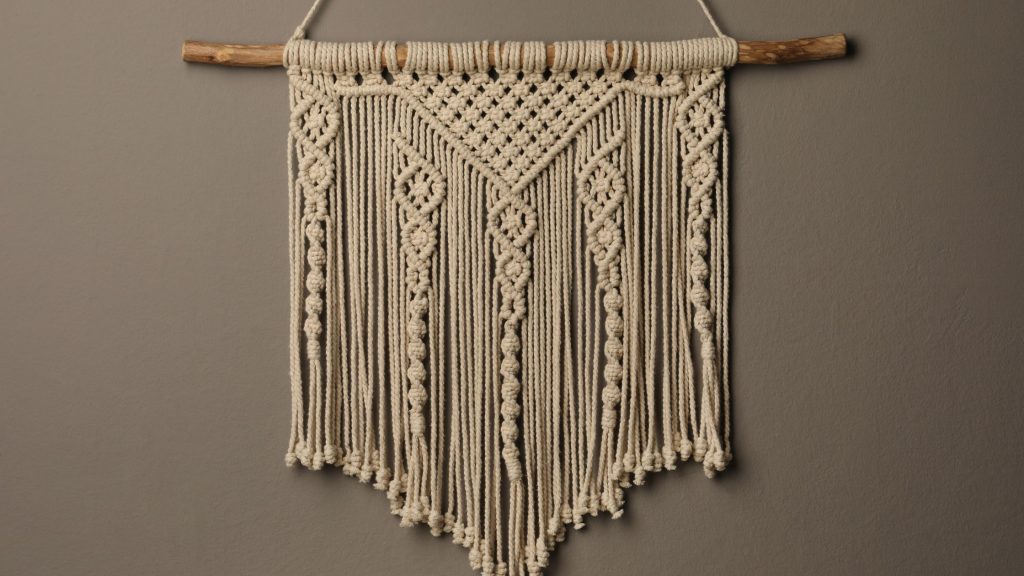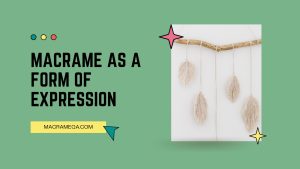Macrame, the art of knotting cords to create intricate patterns, has experienced a fascinating journey of popularity throughout history. From its origins in ancient times to its resurgence in the 1970s, macrame has captivated people with its versatility and stunning creations. This article unravels the story behind macrame’s rise and fall, exploring the factors that influenced its waxing popularity and the subsequent waning trends. Prepare to be enthralled by the rich tapestry of macrame’s fluctuating fame and discover the reasons behind its enduring allure.
Macrame’s Ancient Roots
Macrame, the ancient art of knotting cords to create intricate designs and patterns, has a rich history that dates back thousands of years. The exact origins of macrame are elusive, but it is believed to have originated in the 13th-century Arab world. The word “macrame” itself is said to be derived from the Arabic word “miqramah” meaning “fringe” or “ornamental fringe.”
Early Origins of Macrame
Macrame techniques were practiced by sailors, who used knots to create decorative and functional items on their ships. As maritime trade routes expanded, macrame spread to different regions around the world, including China, India, and the Middle East. In China, macrame was used to create elaborate tassels and decorative knots for clothing. In India, it was incorporated into textile designs and used to create intricate jewelry. Macrame also gained popularity in the Middle East, particularly in Persia, where it was used to create elaborate carpets and wall hangings.
Spread of Macrame Techniques
Macrame techniques were further disseminated through trade routes and cultural exchange. With the expansion of the Ottoman Empire in the 15th century, macrame spread throughout Europe, influencing the decorative arts of the time. European sailors and explorers also adopted macrame techniques and brought them back to their home countries. The art of macrame continued to evolve and adapt in different cultures, each putting its unique spin on the craft.
Macrame in Different Cultures
Macrame took on different forms and meanings in various cultures. In South America, indigenous communities used macrame as a way to express their cultural identity and symbolize their connection to nature. In Africa, macrame was incorporated into ceremonial clothing and used to create intricate wall hangings. In Japan, macrame techniques were blended with traditional braiding methods to create stunning textile works of art.
Macrame’s Renaissance
After centuries of being primarily associated with functional purposes, macrame experienced a renaissance in the 19th century with the resurgence of decorative arts and the rise of the Victorian era.
Revival in 19th Century Europe
In Europe, the revival of macrame was fueled by a growing interest in handicrafts and DIY projects. Macrame was seen as a way to add intricate and decorative elements to clothing, home decor, and accessories. The techniques and designs of macrame were shared and popularized through instructional manuals and patterns, making it accessible to a wider audience.
Macrame in Victorian Era
During the Victorian era, macrame became immensely popular as a form of decorative art. Elaborate macrame curtains, tablecloths, and bedspreads adorned the homes of the wealthy. The Victorians also incorporated macrame into their fashion, with delicate macrame lace collars and trims on garments. Macrame was seen as a symbol of refinement and elegance during this time.
Art Nouveau Influence
Macrame’s popularity in the Victorian era laid the foundation for its integration into the Art Nouveau movement of the early 20th century. Art Nouveau embraced the organic forms found in nature and sought to incorporate them into all aspects of design. Macrame, with its flowing lines and natural materials, perfectly captured the essence of the Art Nouveau aesthetic. Macrame techniques were used to create unique and intricate designs in furniture, jewelry, and decorative arts.
Macrame’s Modern Comeback
Macrame experienced a resurgence in the 1960s and 1970s, fueled by the cultural shifts and counterculture movements of the time.
Macrame’s Popularity in the 1960s and 1970s
The 1960s and 1970s marked a period of radical cultural change, with a desire to break away from traditional norms and explore alternative lifestyles. Macrame, with its bohemian and free-spirited aesthetic, fit perfectly into this era. The craft gained popularity as people began to experiment with handmade and unique home decor and fashion. Macrame wall hangings, plant hangers, and accessories were staples of this era, adding a touch of the unconventional to living spaces.
Macrame as a Symbol of Counterculture
Macrame became emblematic of the counterculture movement, representing a rejection of mass-produced goods in favor of homemade and sustainable alternatives. People embraced the DIY ethos of macrame, relishing the opportunity to create their unique pieces and reject the consumer-driven culture of the time. Macrame workshops and communal sharing of macrame patterns became a way for like-minded individuals to come together and express their creativity.
Macrame’s Role in Bohemian Fashion
The bohemian fashion trend of the late 1960s and early 1970s further propelled macrame into the mainstream. Flowing macrame garments, accessories, and handbags became synonymous with the bohemian lifestyle. Macrame was seen as a way to express individuality and a connection to nature. The fashion industry embraced macrame, incorporating it into designer collections and bringing it to a wider audience.
Macrame in the Digital Age
In the age of technology and social media, macrame has found a new platform for its resurgence and popularity.
Macrame’s Presence in Online Communities
The rise of online communities and platforms dedicated to crafting and DIY projects has provided a space for macrame enthusiasts to connect, share their work, and learn from one another. Websites, forums, and social media platforms have become hubs for macrame lovers, allowing them to showcase their creations, find inspiration, and participate in virtual workshops.
Macrame’s Resurgence in DIY Culture
In an era marked by a desire for self-sufficiency and sustainability, macrame aligns perfectly with the DIY culture. With an abundance of online tutorials and resources, individuals can easily learn macrame techniques and create their unique pieces. Macrame’s accessibility and affordability make it an attractive craft for those looking to add a personal touch to their homes and wardrobes.
Social Media Influencing Macrame Trend
Social media platforms such as Instagram and Pinterest have played a significant role in the resurgence of macrame. Artists and designers showcase their macrame creations, inspiring others to take up the craft. The visual nature of social media platforms allows for the easy sharing of macrame designs, patterns, and tutorials, creating a thriving online community of macrame enthusiasts.
Macrame as a Sustainable Craft
In a world increasingly concerned with environmental sustainability, macrame offers a sustainable alternative to mass-produced goods.
Eco-friendly Nature of Macrame
Macrame is inherently eco-friendly, as it uses natural materials such as cotton, linen, and hemp. These materials are renewable and biodegradable, making macrame a more sustainable choice compared to synthetic fabrics and materials. Additionally, macrame is a zero-waste craft, as excess cords can be repurposed or used for future projects.
Macrame’s Bond with Minimalism
The rise of minimalism as a lifestyle and design trend has further boosted the popularity of macrame. The clean lines and simplicity of macrame designs align perfectly with the minimalist aesthetic. Macrame wall hangings and plant hangers add texture and visual interest to minimalistic spaces, creating a balance between functionality and decor.
Macrame’s Contribution to the Slow Fashion Movement
Macrame’s sustainable and handmade nature aligns with the principles of the slow fashion movement. Slow fashion emphasizes ethical production, fair trade, and environmentally friendly practices. By choosing macrame products, individuals can support small-scale artisans and reduce their carbon footprint. Macrame workshops and classes also empower individuals to create their own sustainable and unique fashion items.
Challenges to Macrame’s Popularity
While macrame has experienced a resurgence in recent years, it still faces some challenges that impact its popularity.
Competition from Other Crafting Trends
Macrame faces competition from other crafting trends that capture the attention of DIY enthusiasts. As new crafting techniques and trends emerge, attention and resources may shift away from macrame. However, macrame’s timeless appeal and versatility continue to attract a dedicated community of artisans and enthusiasts.
Misconceptions and Stereotypes
Misconceptions and stereotypes about macrame as an outdated or kitschy craft can hinder its popularity. Some people may view macrame as a relic of the past, failing to recognize its artistic value and modern applications. Education and exposure to contemporary macrame designs are key to dispelling these misconceptions and showcasing the craft’s potential.
Perceived Difficulty in Learning Macrame
Learning macrame can be perceived as challenging and time-consuming, deterring some individuals from venturing into the craft. However, with the plethora of online tutorials, classes, and workshops available, learning macrame has become more accessible than ever. Breaking down the learning process into manageable steps and offering guidance and support can help overcome this perceived difficulty.
Macrame’s Contemporary Applications
Macrame has evolved beyond its traditional uses and is now widely embraced in various contemporary contexts.
Macrame in Interior Design
Macrame has become a popular choice for interior designers looking to add texture, warmth, and visual interest to spaces. Macrame wall hangings, curtains, and room dividers are used to create a cozy and bohemian ambiance in homes, cafes, and office spaces. Macrame plant hangers have also gained popularity, bringing a touch of greenery and naturalness into urban living spaces.
Macrame in Wedding Decor
Macrame adds a romantic and whimsical touch to wedding decor. From macrame backdrops and arches to table runners and chair decorations, macrame is used to create stunning and unique settings for weddings. The handmade and intricate nature of macrame perfectly complements the intimacy and personalization associated with weddings.
Macrame as Modern Art
Contemporary artists and designers are pushing the boundaries of macrame, turning it into a medium for modern art. Macrame installations, sculptures, and large-scale wall hangings blur the line between craft and art. By experimenting with materials, techniques, and forms, artists are creating captivating and thought-provoking macrame pieces that challenge traditional notions of the craft.
Macrame’s Influence on Other Crafts
Macrame’s influence extends beyond the craft itself, inspiring and influencing various other art forms.
Macrame Elements in Knitting and Crochet
Macrame techniques have been incorporated into knitting and crochet, adding texture and dimension to these traditional crafts. Cords, knots, and fringes reminiscent of macrame are used to embellish garments and accessories, breathing new life into these age-old techniques.
Macrame’s Impact on Fiber Art
Fiber artists have embraced macrame as a medium for creating intricate and tactile pieces. Macrame techniques are combined with weaving, embroidery, and other fiber art techniques to create stunning mixed-media works. Macrame’s versatility and adaptability make it a natural fit for fiber artists looking to explore new possibilities.
Macrame-inspired Jewelry and Accessories
Macrame’s influence is seen in the world of jewelry and accessories, where knotted cords are used to create unique and statement pieces. Macrame bracelets, necklaces, and earrings incorporate a mix of macrame knots and beads, resulting in pieces that are both trendy and timeless.
Macrame’s Revitalization through Workshops
Macrame workshops and classes have played a significant role in reviving and sustaining macrame’s popularity.
Educational Workshops and Classes
Macrame workshops provide a hands-on learning experience, allowing participants to master various techniques and create their macrame projects. These workshops offer a supportive and creative environment where individuals can engage with the craft, learn from experienced instructors, and connect with fellow macrame enthusiasts.
Macrame’s Therapeutic Benefits
Many individuals find macrame to be a therapeutic and meditative practice. The repetitive nature of knotting can promote relaxation, reduce stress, and increase mindfulness. Macrame workshops often emphasize the mental and emotional benefits of the craft, providing participants with a creative outlet and a space for self-expression.
Interactions and Networking in Macrame Workshops
Macrame workshops not only offer an opportunity to learn and create but also facilitate connections within the macrame community. Participants can exchange ideas, share techniques, and form lasting friendships. These interactions foster a sense of camaraderie and community, strengthening the bond between macrame enthusiasts and ensuring the continued growth and popularity of the craft.
Macrame’s Future Potential
As macrame continues to captivate crafters and enthusiasts worldwide, its future potential remains bright.
Adaptation to Sustainable Lifestyle Movement
As the sustainable lifestyle movement gains momentum, macrame’s inherent eco-friendly qualities will continue to make it an attractive choice. Macrame’s natural materials, zero-waste nature, and handmade appeal align with the values of conscious consumers. As more individuals seek sustainable alternatives in their daily lives, macrame’s popularity is likely to rise.
Integration of Technology and Macrame
Technology has the potential to further enhance the craft of macrame. With the help of digital tools and apps, macrame enthusiasts can create and share patterns, access instructional videos, and connect with the macrame community. Virtual reality and augmented reality technologies may also provide immersive learning experiences, allowing individuals to explore macrame techniques in a new and interactive way.
Macrame’s Influence on Fashion and Decor Trends
Macrame’s influence on fashion and decor trends is far from over. As designers continue to experiment with macrame techniques and incorporate them into their collections, macrame will remain a staple in the world of fashion. In decor, macrame’s versatility offers endless possibilities for incorporating texture and visual interest into spaces, ensuring its continued presence in interior design trends.
Conclusion
In conclusion, macrame’s journey from its ancient roots to its contemporary applications has been remarkable. From functional knots on sailing vessels to an art form embraced by countless cultures, macrame has evolved and adapted through the centuries. Its popularity has waxed and waned, but its enduring appeal as a sustainable, creative, and versatile craft ensures that macrame will continue to captivate and inspire generations to come. So, grab your cords embrace the art of macrame, and let your imagination take flight as you create beautiful and unique pieces that reflect your individuality and love for this ancient craft.

